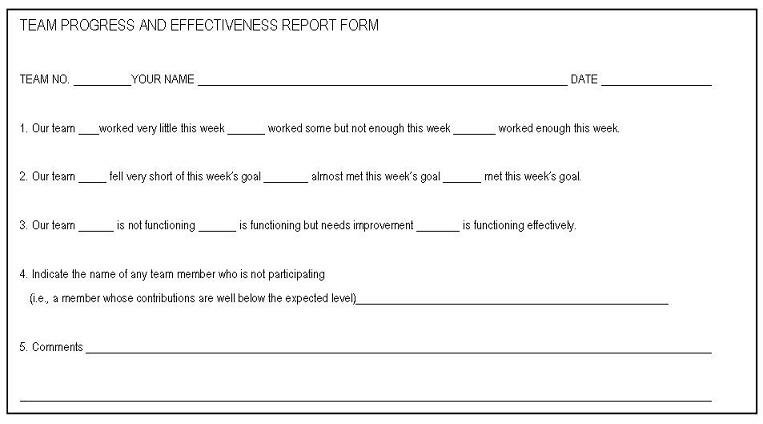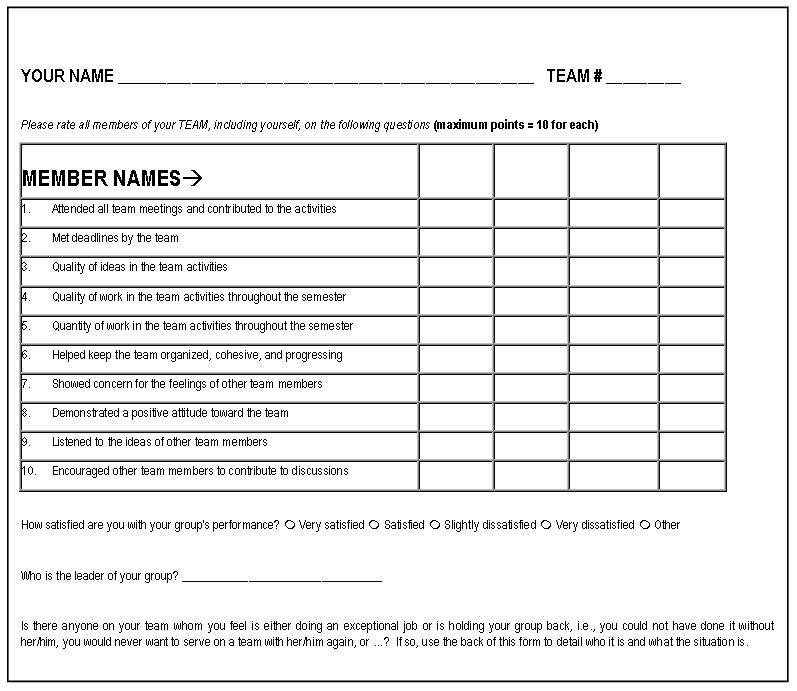|
Many faculty members throughout the Foundation Coalition have been using student teams in their classes for years. Each has developed his approach to monitoring progress, partly based on published research and partly based on individual experience. Actual examples of how some faculty members have assigned teams may help others.
Example No. 1: Russ Pimmel, Electrical Engineering, University of Alabama
Russ teaches a senior electrical engineering design course. He uses the form shown below to monitor team progress and effectiveness in a four-week design project. Weekly, each student completes the form confidentially. Completing the form takes only a few minutes of class time, and reviewing them takes 10–15 minutes of the instructor’s time. This review enables the instructor to identify teams with problems and to intervene early in the project.

Example No. 2: Terry Kohutek and Jim Morgan, Civil Engineering, Texas A&M University
Terry and Jim regularly team the first-year engineering course that is common for all engineering majors. They use the form shown below to allow students to evaluate their teammates on ten behavior patterns. Again, instructors can analyze these reports and identify possibly dysfunctional teams and individuals who might be causing problems. He or she can intervene or, alternatively, provide a summary of the results and let the team deal with any problems.

Example No. 3: Russ Pimmel, Electrical Engineering, University of Alabama
In another electrical engineering course Russ routinely uses team-based in-class cooperative learning activities. For each in-class exercise, Russ requires each team to submit a single written response to questions posed in the cooperative learning activity. These responses are then graded and can be used by the instructor to identify poorly performing teams and to intervene. To minimize the time required to grade each assignment, Russ uses a simple criterion. One answer in each submission is evaluated and assigned either ten points for the correct answer or eight points for incorrect ones.
|